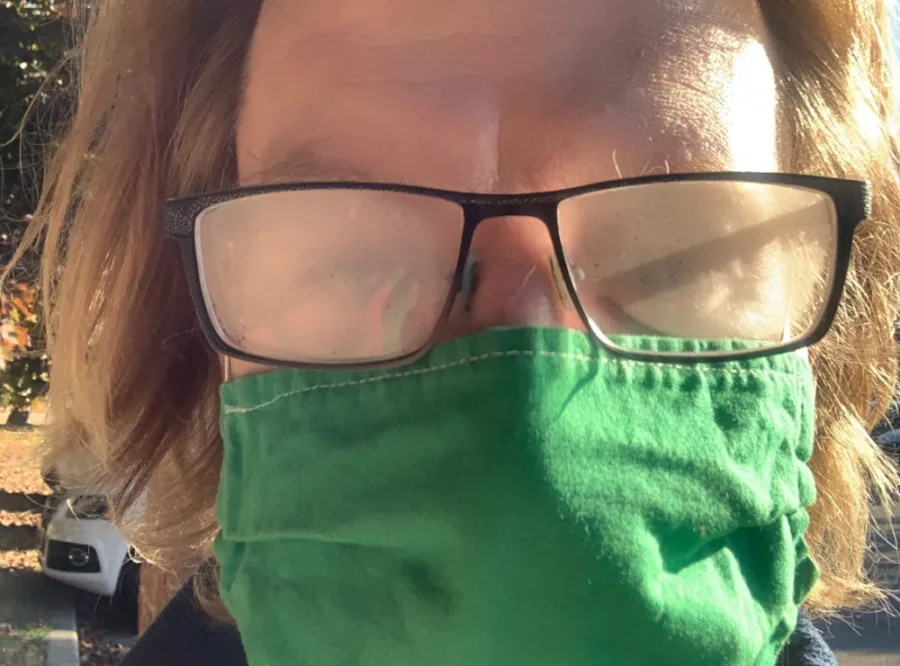
Face masks and glasses: Say goodbye to walking in a fog
Reporter and Storm Hunters host, Mark Robinson, shares some solutions on how to keep your glasses from fogging up while wearing a mask.
Don’t know about you, but the cold weather is driving me up one wall and down the other. I don’t mean that winter is my least favourite season because of the lack of thunderstorms. I mean that wearing a mask for the protection of myself and others (thank you COVID) is fogging up my glasses every time I breathe.
So, not great.
However, all hope is not lost! I have done a series of experiments on myself to determine the best way to keep your glasses from fogging up in the cold. It was less mad scientist laughter and more soaping of things than you might expect.
First up, we have to figure out why we get fogging in the first place. It has everything to do with dewpoints and moisture in the atmosphere (in this case, your warm breath). When we cool a parcel of atmosphere to its dewpoint temperature, the water vapour in that parcel condenses into tiny water droplets. In the real atmosphere, we need what we call condensation nuclei (small bits of dust etc) for the droplets to appear.
So, when we breathe, the warm, moist environment of our lungs ensures that the air we breathe out will also be warm and moist and thus, has a high dewpoint. When that hits our glasses, generally the same temperature as the outside atmosphere, it causes the water in our exhaled breath to instantly condense on them. In meteorological terms, the air has reached its dewpoint temperature on the surface of the glasses.
So, we have two ways of combatting this; block the air from reaching your glasses or ensure that your glasses won’t allow for condensation to occur on them.
Blocking Your Breath
A physical barrier means that you stop any air getting out from the top of your mask and into the space between your face and your glasses. This is important as it will minimize the amount of air slipping in around the mask, thus increasing your (and the people around you) safety. This can be accomplished in a few ways:
A shaped mask - I tried this one and it did not work at all because even shaped masks don’t wrap tightly enough around your nose
Pulling your mask up high enough to keep the nose pads below the fabric – this worked quite well, but it got very painful as the fabric rubbed on my eyeballs. Not ideal.
A metal nose piece attached to the fabric – this worked very well as it closed off the gap between my nose and the mask. It wasn’t perfect because some condensation did occur (but there may be a solution to that …)
Medical masks – these worked well and were large enough to fit around my face, but the metal piece that’s supposed to go around your nose didn’t have enough strength to really form fit properly.
Taping the top or using a band-aid – this worked amazingly well, but there was a bit of downside; pulling off the tape was spectacularly painful and given how many times a day you’d have to pull off your mask, this may be a no go for a lot of people (unless you enjoy tearing band-aids off very sensitive skin).
Chemical Blocking
Using something to ensure that condensation doesn’t happen on your glasses is the other way we can stop the fogging. This goes back to making sure that either the glass is so clean that condensation can’t happen or by decreasing the surface tension of water.
One important note! Check with your optometrist before you put anything on your glasses as many modern pairs have coatings that could be damaged with anything other than soap and water.
Soap and water – a simple cleaning to get rid of oils and dirt on your glasses will reduce material that water vapour can form condensation on. Just swiping your glasses through your shirt (I do this WAY too often) won’t remove the oils as well as soap and water.
Anti-fog spray – this worked well, but not quite enough to give me clear vision. This stuff is also almost impossible to find right now as everyone is buying all of it as soon as it’s offered in stores. I had to go to a SCUBA shop to find some and the spray I did find was for SCUBA masks, not glasses. However, it’s the same stuff, just in a thicker medium. The spray works because it reduces surface tension of the water so rather than lots of lots of tiny droplets (fog), you get a film of water that’s easier to see through.
Shaving cream – I heard this one through a friend and I just had to try. It didn’t do much beyond soap and water, but did have the added bonus of making my glasses smell nice.
So, what I’ve come up with is simple – get yourself a mask that has a good, solid piece of metal that will fit around your nose and close off as much air from escaping upwards into the space between your nose and glasses. For any air that does escape, a good anti-fog spray or a regular cleaning will ensure that any condensation will be minimal.
You can watch me experiment with these tricks in the video that leads this article.











